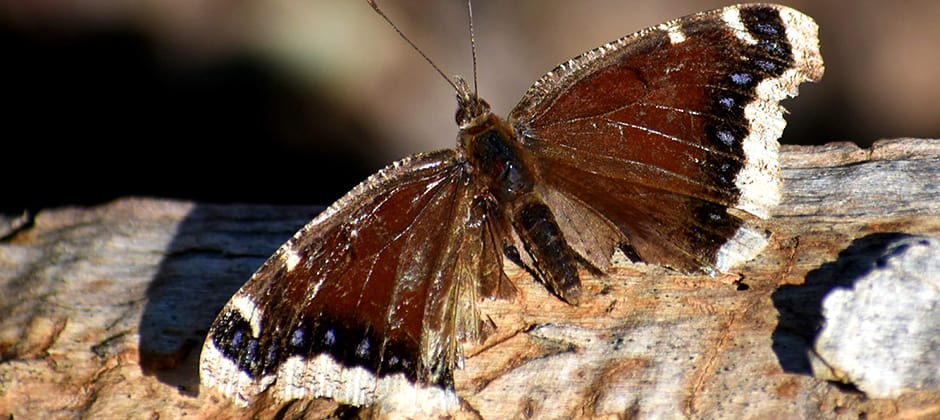Share this article
With warm weather, mourning cloak emerges
Everyone has heard the saying “a picture’s worth a thousand words,” but what a picture does not provide is the backstory — details about the who, what, where, when and why.
John Cleckler is a fish and wildlife biologist in the Sacramento Fish and Wildlife Office who is as passionate about photography as he is about biology. Here is his story about a photograph he took of a mourning cloak butterfly (Nymphalis antiopa) during a recent outing with his children.
After two back-to-back days of sunny weather, I took my kids for a walk in the Koobs Nature Area in Carmichael, California. Flowers were going to bloom soon, but at that point green was the prominent color. So, I was slightly surprised to see a butterfly sunning itself. On closer inspection, I realized it was a mourning cloak; which is one of the likely suspects for this time of year. It’s one of the few butterfly species that overwinters (hibernates) as an adult. It may have been waiting it out, perhaps under raised bark, for the first warm days of spring to emerge. It’s okay that there’s little flower nectar available because they feed on tree sap, animal droppings, and decaying matter. We went out the following weekend and saw more mourning cloaks. A butterfly landed on one of their friends, they were very excited to see it and ran back to tell me about it. This kicks off what is likely to be a good butterfly season.
– John Cleckler
The U.S. Fish and Wildlife Service is a Strategic Partner of The Wildlife Society.
Header Image: Tattered wings on a mourning cloak butterfly can be a sign that it already experienced last year's flight season. ©John Cleckler








